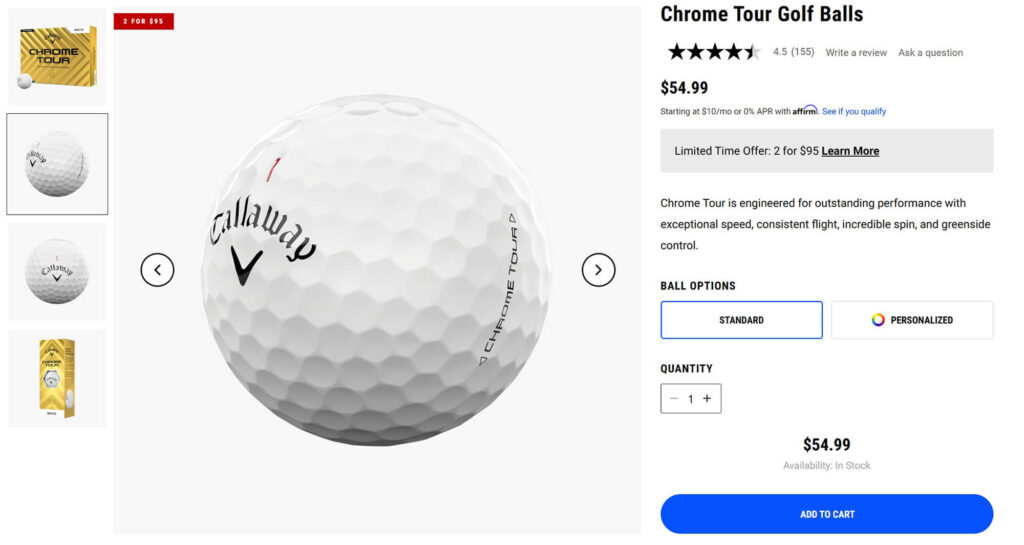The Ultimate Guide to Choosing the Right Golf Balls: Don’t Get Played!
Alright, let’s set the scene: you’re at your golf shop, wandering through the maze of golf balls. You’ve got everything from budget-friendly options to luxury-priced balls that make you do a double-take. You finally grab what looks like the latest Pro V1, thinking you’ll be sinking birdies like a pro – only to find out later you picked up an older model. It happens to the best of us!
The golf ball aisle can feel like a complicated puzzle. Between product updates, fresh packaging, and retailers trying to clear out old stock, figuring out what’s what can be more confusing than reading a tricky green at Augusta. But don’t worry! Navigating this ball-buying minefield doesn’t have to be rocket science. Let’s dive into how to make sure you’re not buying yesterday’s tech at a premium price.
Check the Manufacturer’s Website First
You might think this is a “no-brainer,” but you’d be surprised how many folks skip this step! The manufacturers are all about selling their latest and greatest, so their websites will almost always highlight the newest models. Consider the manufacturer’s website your guidebook – if the info doesn’t match what you’re planning to purchase, you might be eyeing an outdated model.
Seriously, take 30 seconds to pull up the website of brands like Titleist or TaylorMade while you’re shopping. It’s a quick check that can give you peace of mind and possibly save you some cash!
Look for Packaging Changes
When a manufacturer rolls out a new golf ball, they also update the packaging. Sometimes it’s a subtle change, like a new shade of color or a logo adjustment. But if you keep your eyes peeled, these shifts are usually pretty noticeable.
Pro tip: New packaging often has words like "New" or "Nouveau" prominently displayed during its first year. And if you happen to see French writing on the package, that’s just a nod to Quebec’s bilingual laws, but it can also help indicate the ball’s age. If the box lacks these labels, you’re probably looking at something that’s been on the shelf for a while.
Side Stamps: The Real Deal
When it comes to identifying what’s fresh and what’s not, look at the side stamp (the tiny letters and numbers usually found on the side of the ball). If a ball is listed on the USGA’s conforming list, it has to have a distinctive side stamp that changes with each new release.
This is your best bet for figuring out what you’re really buying – especially helpful when you find stray balls on the course from previous rounds. If you ever get confused, a quick look on the manufacturer’s website can tell you what the current side stamp looks like.
Price Matters
Just like most things in the golf world, the price of balls is carefully controlled. Authorized retailers can’t sell below a certain Minimum Advertised Price, so if you spot a price that seems too good to be true, it probably is.
For instance, if a retailer lists the Tour Response for $34.99 while the official site has it for $42.99, there’s a strong chance you’re looking at an older model. Remember, if you’re paying a premium, you deserve the latest tech!
Retail Descriptions Are Your Friend… Mostly
When you’re shopping at major places like PGA TOUR Superstore, take a close look at the product descriptions. Older models often have phrases like “Prior-Gen” or “Prior Generation” in their titles. Sure, those deals may be tempting, but you want to be sure you’re not snagging something that’s too dated.
Look for something that includes the model year as well, but be cautious – you need to grasp release cycles to make sense of it all.
Understanding Release Cycles
Not every golf ball manufacturer has the same release schedule. Titleist, for example, rolls out its Pro V1s in odd-numbered years. On the flip side, Srixon tends to drop Z-Star models during odd-numbered years as well.
Other brands like Callaway and TaylorMade usually follow along with Titleist. So, when you’re picking out your next favorite ball, be sure you don’t accidentally buy something that’s already a few years old.
The Bottom Line: Be Smart & Save Cash!
Let’s face it, golf can be pricey enough without spending top dollar for outdated equipment. Spending just a few minutes to check things out can save you some serious cash and ensure you’re getting the performance you deserve.
Interestingly, some older models are actually stellar. Take the 2019 TaylorMade TP5; many consider it one of the best balls ever. If you spot it at a discount, go for it! Just ensure you know what you’re getting and that you’re paying a fair price.
Be an Informed Buyer
Your best defense against getting fooled in the golf ball aisle is to arm yourself with knowledge. Check out the manufacturer’s site, compare packaging, keep an eye on side stamps, and scrutinize product descriptions. It’s not hard; it just takes a little effort.
After all, whether your ball ends up in the water hazard (let’s be real, it probably will!) or on the green, you want to lose the right ones.
We all know that golf can be unpredictable, but with this guide, you’ll feel confident that you’re picking the perfect ball for your game. Happy golfing!


